The Basics
This self-guided tutorial shows how the job framework clearly organizes jobs and introduces the related terminology. It will take you 10 minutes or less to view.
Introduction
This self-guided tutorial shows how the job framework clearly organizes jobs and introduces the related terminology. It will take you 10 minutes or less to view.
In this tutorial, you will learn:
- How the job framework is constructed
- The terminology used in the framework
- How roles (jobs) are organized inside the framework
Overview
Roles (jobs) are clearly organized inside a new job framework using the structures shown below. This tutorial will walk you through how they’re constructed.
Functions and Familes Chart
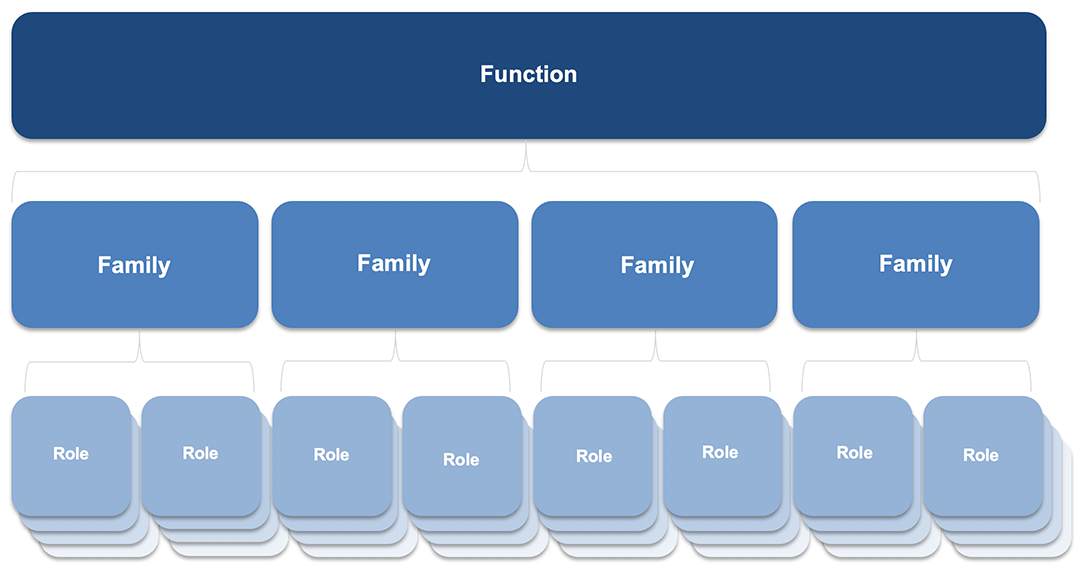
Career Levels Chart
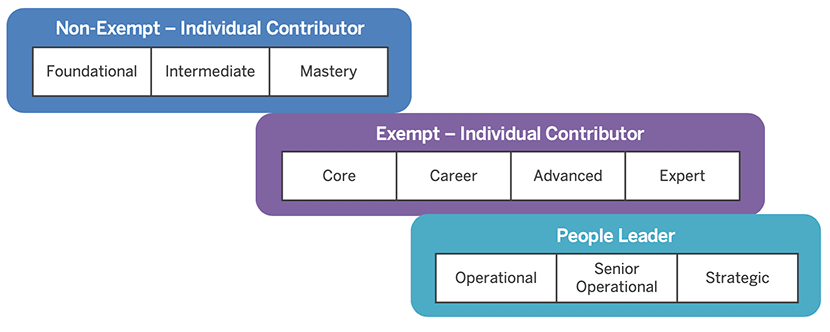
A simple and transparent job framework makes it easier to see how roles are related across the university and helps illuminate potential career paths available at IU.
Job Function
All roles (jobs) are organized first by job function, the largest classification category.
Examples: Information Technology, Finance, Student Services.

Roles at IU with similar areas of focus are grouped into job functions.
Job Family
Roles (jobs) are organized into job families that group similar types of work, skills, knowledge, and/or expertise.
Examples: Within the Finance job function, there may be Financial Administration, Payroll, and Tax job families.
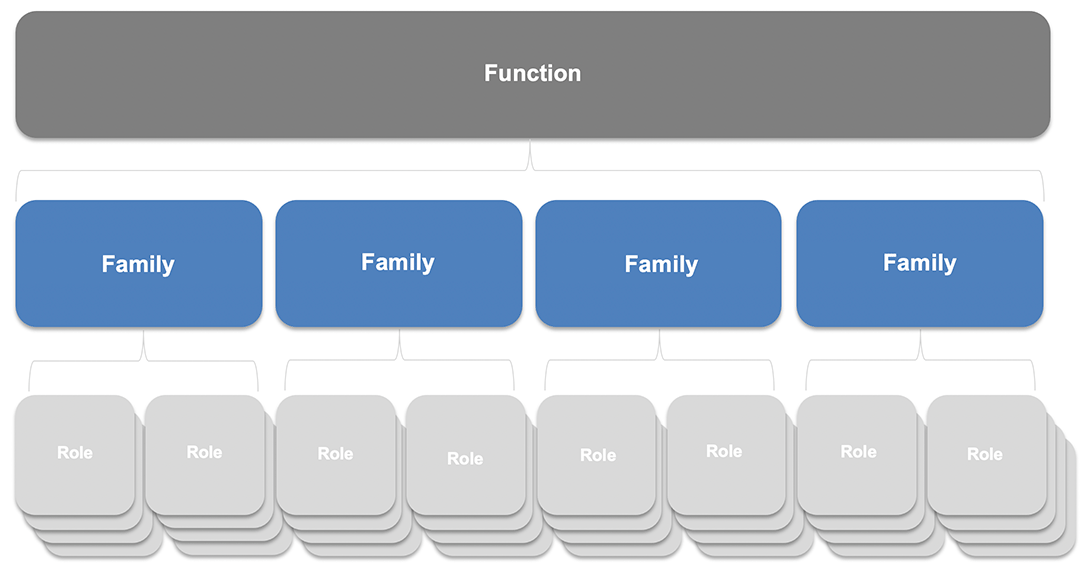
Roles at IU are further categorized according to their specialization using job families.
Role
Individual roles (jobs) are found within each job family.
Examples: Financial Administration Coordinator, Financial Administration Specialist, Financial Administration Leader
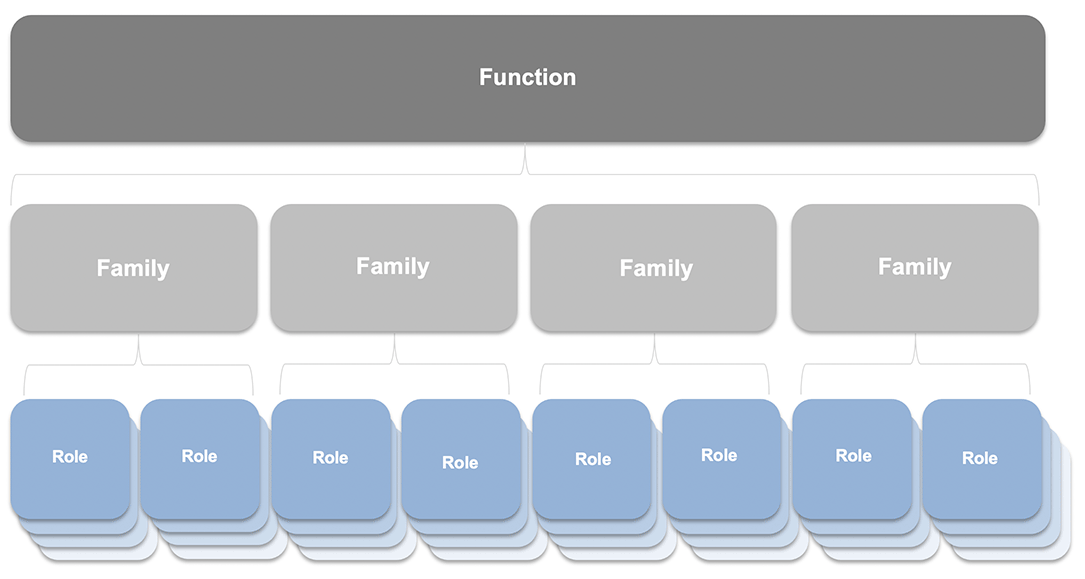
The job framework clearly displays the roles that exist at IU. Each role has a role descriptor that focuses on the role itself, not a specific individual.
Career Structure & Career Level
Each role has an associated career structure and career level.
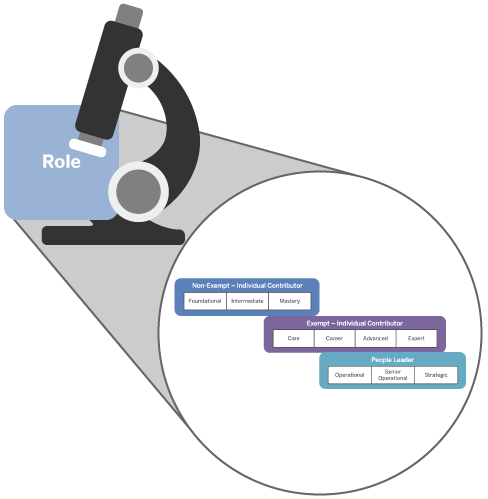
Career structures and career levels help show how roles are related to one another at IU and provide a better understanding of career advancement opportunities.
Career Structure
Roles are assigned one of three career structures:
- Non-Exempt – Individual Contributor (formerly SS/CL/TE, SM, GS, and PAO positions)
- Exempt – Individual Contributor (formerly PAE positions)
- Exempt – People Leader (formerly PAE positions)
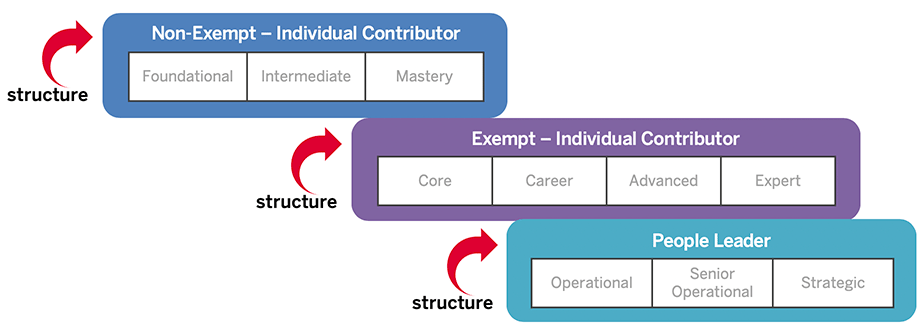
Career structures represent the nature of the primary duties and responsibilities of roles at IU.
Career Level
Roles are assigned a career level based on typical work dimensions shared by all roles at that level.

By accounting for growth in complexity and higher levels of duties and responsibilities for roles, career levels reveal opportunities for growth and the different career paths available at IU.
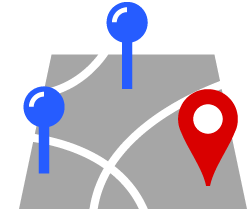 Summary
Summary
This transparent approach gives you a clear picture of your role and how it relates to other roles, your individual career path, and opportunities for development and growth at IU.
Next, you can see an example of how the framework can help reveal career options at IU and even take an in-depth look at the elements of the job framework.
